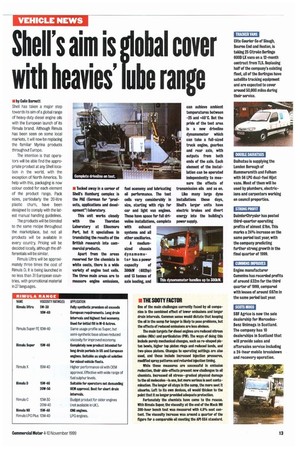Shell's aim is global cover with heavies' Tube range
Page 15

If you've noticed an error in this article please click here to report it so we can fix it.
• by Colin Barnett
Shell has taken a major step towards its aim of a global range of heavy-duty diesel engine oils with the European launch of its Rimula brand. Although Rimula has been seen on some local markets, it will now be replacing the familiar Myrina products throughout Europe.
The intention is that operators will be able find the appropriate product at any Shell location in the world, with the exception of North America. To help with this, packaging is now colour coded for each element of the product range. Pack sizes, particularly the 20-litre plastic churn, have been designed to comply with the latest manual handling guidelines.
The products will be blended to the same recipe throughout the marketplace, but not all products will be available in every country Pricing will be decided locally, although the differentials will be similar.
Rimula Ultra will be approximately three times the cost of Rimula D. It is being launched in no less than 31 European countries, with promotional material in 27 languages.
II Tucked away in a corner of Shell's Hamburg complex is the PAE (German for "products, applications and development") laboratory.
This unit works closely with the Thornton Laboratory at Ellesmere Port, but it specialises in translating the results of the British research into commercial products.
Apart from the areas reserved for the chemists in white coats, there is a wide variety of engine test cells. The three main areas are to measure engine emissions,
fuel economy and lubricating oil performance. The test cells vary considerably in size, starting with rigs for car and light van engines. These have space for full driveline installations, complete with exhaust systems and all other ancillaries.
A mediumsized chassis dynamometer has a power capacity of 300kW (402hp) and 13 tonnes of axle loading, and can achieve ambient temperatures between -25 and .40‘C. But the pride of the test area is a new driveline dynamometer which can take a full-sized truck engine, gearbox and rear axle, with outputs from both ends of the axle. Each element of the installation can be operated independently to measure the effects of transmission oils and so on.
Like many large dyne Installations these days, Shell's larger units have electric brakes and divert energy into the building's power supply.








































































































































